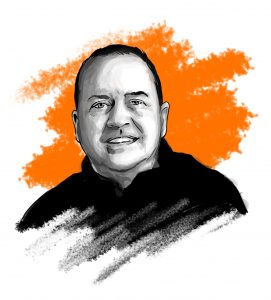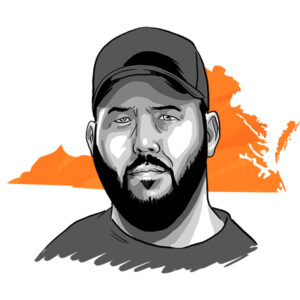AMERICAN MOTORCYCLIST JUNE 2019
Tips & Tricks: Top-end service, spare parts, ‘centering’ yourself, toning up
 By Tom Mehren
By Tom Mehren
If you’re having top-end service on your motor and it’s been a while since the cylinder head has been off, consider replacing the timing belt/chain at the same time. That can save you money on labor later, and protect you against a failed belt/chain down the road.
Stranded? Not.
Being stranded on the side of the road is not nearly as common today as it was prior to all the modern technology we now enjoy on newer motorcycles. Nonetheless, it’s still possible to become stranded, and sometimes that’s the result of modern technology. If your bike model has a reputation for blowing electrical items like rectifiers, computer chips or otherwise, consider carrying a spare of those items so you can simply continue the ride.
Journey To The Center Of Your State
Here’s a ride idea. On a paper map, draw a line going from the southwest corner to the northeast corner. Then draw a line from the northwest corner to the southeast corner. Wherever the two lines intersect is a candidate for your next ride. While some will say they’ve ridden a fair amount of states, how many have ridden to the center of each one? If the center is one big black hole with no roads near the middle, make a circle tour of the roads around the area.
Toning Up With Free Weights
As you age, you may notice it’s a little harder to get on and off the bike. Adding a simple free-weight workout to your exercise regime can help loosen your joints, keep you limber and aid in balance. There’s no need to push it, a lightweight set can do wonders to tone your muscles. Plan on three times a week. There are a number of simple plans on the web that only take about 15 minutes to complete a full circuit.
Make A Chain Slack Gauge
It’s not practical to carry a fractional caliper as part of your tool kit on the road. Because they must be protected, they require a case I’m not willing to stuff into my gear assortment. But what do you really need one on the road for anyway? To measure drive chain slack every 500 miles. Instead, take a flat plastic lid, from say an empty yogurt, dip or salsa tub and cut it square to your bike manufacturer’s maximum slack spec. You can find that in your owner’s or shop manual. Mark the max point and minimum points with a Sharpie. Place a clear piece of tape over it and smooth the corners so they don’t cut into anything, then store it flat in your on-board tool kit. It’s not pretty, but it works.
Tom Mehren produces soundrider.com, an online resource of information about riding motorcycles in the Pacific Northwest and has authored six tour books on the subject.

AMA State Chapter Coordinator plans road riding expansion in Virginia
David Stone Also Part Of AMA Club
David Stone learned about the AMA from some of the members of his club, the AMA-chartered 13 Rebels MC, and he immediately decided to join and get involved.
“It only made sense to do my homework,” he said. “After learning the ins and outs of what the AMA offers, I came across the AMA EAGLES Program.”
He progressed quickly through AMA offerings, including risk management training, referee training and EAGLES training.
When he learned that the volunteer position of AMA State Chapter Coordinator for Virginia was open, he applied.
“My initial intent is to expand the road riding side of the house throughout Virginia,” Stone said. “I hope to spread awareness and participation.”
Stone, who started riding sport bikes 11 years ago, now owns three Harleys, a Streetglide, a Superglide and a Sportster.
In addition to the street scene, Stone wants to get involved in the off-highway side of riding.
“Shortly after taking the coordinator position, I learned that there is a large dirt riding presence in the state,” he said. “So, my next step is to learn more about the dirt riding and, hopefully, influence a subject matter expert on that side to take the step at becoming an AMA EAGLE and assist me with spreading awareness.”
And he hopes all AMA members get more involved in the organization.
“I’m here to tell you that there is a lot of history with the AMA,” he said. “I would encourage every member to learn as much as you can about the AMA from the beginning days until now, utilize the rewards of being a member and participate in all of the movements aimed toward making the world safer for the motorcyclists.”
To learn more about the AMA EAGLES Program, visit www.americanmotorcyclist.com/For-Members/AMA-EAGLES.
To volunteer as an AMA State Chapter Coordinator, contact AMA State Chapters and Volunteer Manager Marie Wuelleh at [email protected].
